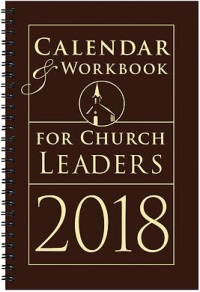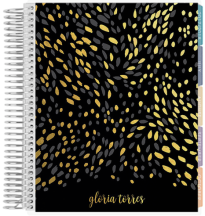Like so many others, I feel a thrill whenever I wander through a store aisle full of back-to-school supplies. Even if I am just on a quick dash to CVS to buy ant traps, that intoxicating odor of fresh pencils and tempera paint gets me every single time.
I remember squeezing my father’s hand as we gazed together at shelves and shelves of spiral-bound notebooks. I remember carefully attaching those sticky multicolor tabs to the dividers in my three-ring binder. And, not least, I remember the enormous care I put into selecting the perfect day planner.
Every single year — even once the math facts and spelling quizzes had given way to college essays and problem sets, even once I was old enough to know better — I managed to convince myself that, if I only bought the right planner, everything else would fall into place.
I would never miss another deadline. I would measure out my days in fifteen-minute increments, gentle but precise. I would finally be like the beautiful straight girls whose specters haunted me all through my twelve years of school.
I bet you had these girls at your school too. They had flawless handwriting. They had perfect hair. And, though even as a kid I suspected they didn’t truly have it all together, they had something even more potent: the ability to fake it.
I had none of those things. Not by a long shot. But I was sure, absolutely sure, that the right organizational tool would help me acquire them all.
Ha.
Ha ha.
AHAHAHAHAHA.
Just kidding. That was a dumb thing to think. There is no planner that finally solved all my organizational problems, and there is no planner that will finally solve all of yours, because there is no planner (yet) with the capacity to rewire your personality from the ground floor up.
BUT! Even if you are, like me, congenitally disorganized and chronically late, there is no reason for despair. There are plenty of tools out there to help you get your life — or at least your working hours — in shape. Everyone has a different style; my personal preference these days is to schedule meetings and appointments (not to mention professional development) in Google Calendar, but use a paper journal for to-do lists, reminders, and blocking out those long stretches in the office where I have to get fifteen small tasks done in no special order.
If you’re starting to shop around for a new planner as September approaches, here are a few that are either tried-and-true favorites or have sparked my interest (h/t the forum at Young Clergy Women International that tipped me off to several of these):
Church-Minded Planners
 Sacred Ordinary Days. This is a favorite among the Young Clergy Women, and it’s not hard to see why. It’s now available in either an academic-year or a liturgical-year format.
Sacred Ordinary Days. This is a favorite among the Young Clergy Women, and it’s not hard to see why. It’s now available in either an academic-year or a liturgical-year format.
Pros: Elegant design, 7.75×8.75″, with a hard cover and ribbon bookmarks. Pages are cleanly laid out and include Revised Common Lectionary readings, as well as room for daily goals and projects. There are also cool extras like a liturgical wheel calendar and a (fingertip-scaled) prayer labyrinth.
Cons: At 2.5 pounds, this planner is a serious doorstop. It is not a good choice for hauling around in your purse. It will also set you back $47. Several fans reported that they love using this book as a prayer journal but would never rely on it as a daily planner.
 Episcopal Liturgical Appointment Calendar. This was my day planner of choice before I switched to an online scheduler, and now I use it for daily devotions — when I read the Bible passages from the Daily Office, I make little notes of thoughts, themes, and sermon ideas.
Episcopal Liturgical Appointment Calendar. This was my day planner of choice before I switched to an online scheduler, and now I use it for daily devotions — when I read the Bible passages from the Daily Office, I make little notes of thoughts, themes, and sermon ideas.
Pros: Handy size (8.5×10″ fits in a purse but still gives you plenty of space to write); beautiful layout; includes Daily Office and RCL Bible passages (conveniently listed on each day of the planner so you don’t have to mess around with a chart), plus extras like art, quotations, and the liturgical color for each day. Luxurious two-page spread for each week. Also, the 2018 edition is PURPLE.
Cons: Starts on the first Sunday of Advent, which is very spiritual and so forth, but most people do not celebrate the liturgical New Year by breaking out a new planner.
 Calendar & Workbook for Church Leaders. This one comes in both an ecumenical and a United Methodist-specific version (thanks, Abingdon Press!).
Calendar & Workbook for Church Leaders. This one comes in both an ecumenical and a United Methodist-specific version (thanks, Abingdon Press!).
Pros: At 6×9″, this is a bit more portable than the calendars above. It also features extra space on Sundays so that you have plenty of room to write down worship details, and there are designated pages for the contact information of your church staff.
Cons: Not nearly as elegant-looking as the calendars above. RCL readings are squished into a teensy little chart instead of listed for each day, which would drive me insane.
Justice-Minded Planners
 Planning to Change the World: A Plan Book for Social Justice Teachers. Includes lots of book recommendations and lesson plan ideas that would not be out of place in your Sunday school.
Planning to Change the World: A Plan Book for Social Justice Teachers. Includes lots of book recommendations and lesson plan ideas that would not be out of place in your Sunday school.
Pros: At 9×11″, this planner will give you lots of space to write. Also, there is so much cool stuff in it! (See sample pages here.) Full of interesting birthdays and historical dates of people and events that made the world better.
Cons: Not the most portable of the bunch.
 Justseeds Organizer. There is simply no lovelier planner anywhere, and your purchase will support the worker-owned Justseeds Artists’ Cooperative.
Justseeds Organizer. There is simply no lovelier planner anywhere, and your purchase will support the worker-owned Justseeds Artists’ Cooperative.
Pros: Visually stunning, especially if you are a sucker for woodcuts like me. Art on the art pages and clean, unfussy design on the calendar pages. Available in two different sizes.
Cons: 2018 edition is not available yet (the link will take you to the 2017 edition). Two weeks on each two-page spread would cramp my planning style, especially given that the larger version is only 5×8″.

Slingshot Organizer. Feeling a little blue about your decision to become a tool of the institutional church? Keep your radical streak alive with the Slingshot Organizer (you can find it at Microcosm Publishing if you’d rather not buy it from Amazon).
Pros: DIY/zine aesthetic. I used a Slingshot for a year and really liked it, especially the inclusion of important dates in labor history and the list of key phrases in various languages (e.g., “freedom and mutual aid” and “Where is the library?”). Two-page spread for each week. Comes in a bunch of colors and two different sizes.
Cons: DIY/zine aesthetic, which is not everybody’s thing. 2018 edition is not available yet (links will take you to the 2017 edition). Some of the art may startle your parishioners when you open your planner at the stewardship meeting. Also, at 5.5×8.5″, I found even the large version of this planner to be slightly too small.
Fancy Pinterest-Minded Planners
 Bullet Journal. I understand that the “Bullet Journal” is, uh, not a planner but a movement. To me, Bullet Journaling just seems like an unnecessarily labor-intensive way of keeping a to-do list. However, if you watch the video and decide it’s a method that suits you, by all means go for it. You can spring for the fancy branded journal linked above, or just get yourself a nice plain notebook.
Bullet Journal. I understand that the “Bullet Journal” is, uh, not a planner but a movement. To me, Bullet Journaling just seems like an unnecessarily labor-intensive way of keeping a to-do list. However, if you watch the video and decide it’s a method that suits you, by all means go for it. You can spring for the fancy branded journal linked above, or just get yourself a nice plain notebook.
Pros: If you are naturally artistic, Bullet Journaling gives you lots of room for creativity. You can do it in any old notebook, rather than springing for an expensive planner. The little symbols seem to really work for a lot of people.
Cons: Did I already say “unnecessarily labor-intensive way of keeping a to-do list”? Also, if you are not naturally artistic, don’t spend too much time looking at Bullet Journal exemplars on Pinterest or it will give you the blues.
 Passion Planner. For keeping your staff meetings and your deepest passions all in one place, a concept which I find sometimes appealing and sometimes annoying, depending on the day.
Passion Planner. For keeping your staff meetings and your deepest passions all in one place, a concept which I find sometimes appealing and sometimes annoying, depending on the day.
Pros: Visually elegant. Includes space for reflection and dreaming about the future. Available in multiple colors and sizes, and in academic-year, calendar-year, or undated format. Again, if you are naturally artistic, the Passion Planner will give you room to go wild.
Cons: To me, this seems like a planner for someone who is already extremely organized. Between the “weekly layouts,” “monthly layouts,” and “passion roadmaps,” I would mix myself up and miss a dental appointment in no time.
 Plum Paper Planner. The infinitely customizable planner for the modern age. If you enjoy scrapbooking, or perhaps if you enjoy the idea of scrapbooking but would prefer someone else to mess around with the scissors and glue, Plum Paper is for you.
Plum Paper Planner. The infinitely customizable planner for the modern age. If you enjoy scrapbooking, or perhaps if you enjoy the idea of scrapbooking but would prefer someone else to mess around with the scissors and glue, Plum Paper is for you.
Pros: Colorful and visually appealing. Available in many patterns and sizes. You can add seven custom daily sections, and there are various additional page packs available for purchase (e.g., wedding planning, baby planning, and fitness planning, not to mention homeschooling and direct sales if you are into such things).
Cons: The scrapbook aesthetic, especially in the workplace, is not to everyone’s taste. Also, customization is expensive. The 8.5×11″ planners start at $42, but can quickly double in price, depending on how much stuff you want to add.
 Erin Condren Lifeplanner. Not quite as customizable as Plum Paper, but another solid choice for clean layout and pretty designs.
Erin Condren Lifeplanner. Not quite as customizable as Plum Paper, but another solid choice for clean layout and pretty designs.
Pros: Styles range from stolid boardroom (black and navy faux-leather covers) to fantastically girly (sparkly flowers everywhere!!!!). The calendar pages are available in three different layouts to suit your scheduling style. Also comes in a hard-bound edition, if you find spiral bindings annoyingly snaggy. Included are a pouch, folder, and one million stickers.
Cons: These things start at $55 and climb quickly in price as you customize them (unless you go for the academic-year student planner, which is not as fancy but begins at a more reasonable $25). I never use those pouch/folder/sticker extras, so to me they just take up extra space.
Whatever tools you choose for planning your new program year, I hope the year itself will be a really really good one. My goal for the year to come is to do all my boring administrative work as efficiently as possible so that I can devote myself to being luxuriously inefficient with the good stuff. Every hour of my workweek that I don’t spend in front of a computer is an extra hour I can spend hanging out at a parishioner’s bedside or quieting my mind to pray.
I’m shopping around for a new planner myself, but I no longer fantasize that choosing the right one will turn me into a different person. I will always have “distinctive” handwriting, unruly hair, and less than zero ability to fake it.
And that’s okay with me now. I have grown — or, more accurately, I am still growing — into exactly the person God made me to be.
Not to say becoming a slightly timelier version of that person would be all bad.

Hi- you said you switched to an online scheduler when you talk about planners, but I don’t know that you said what you use. Would you share that juicy info?
Btw – your blog is super-comforting!
LikeLike
I’m so glad it’s comforting! Unfortunately, the answer to the calendar question is not very juicy … I use Google Calendar for just about everything. I keep one personal calendar (shared with my wife, so I put all evening church events on it too) and one 9-5 church calendar (not shared with anyone, so I don’t need to worry about confidentiality in scheduling pastoral visits, etc.). My church also uses Google Calendar to schedule events and rentals, so with the tap of a button I can check my schedule against the parish’s.
LikeLike
And, of course, I keep a Google Calendar for professional development opportunities: https://rockthatcollar.com/clergy-professional-development-calendar/
LikeLike